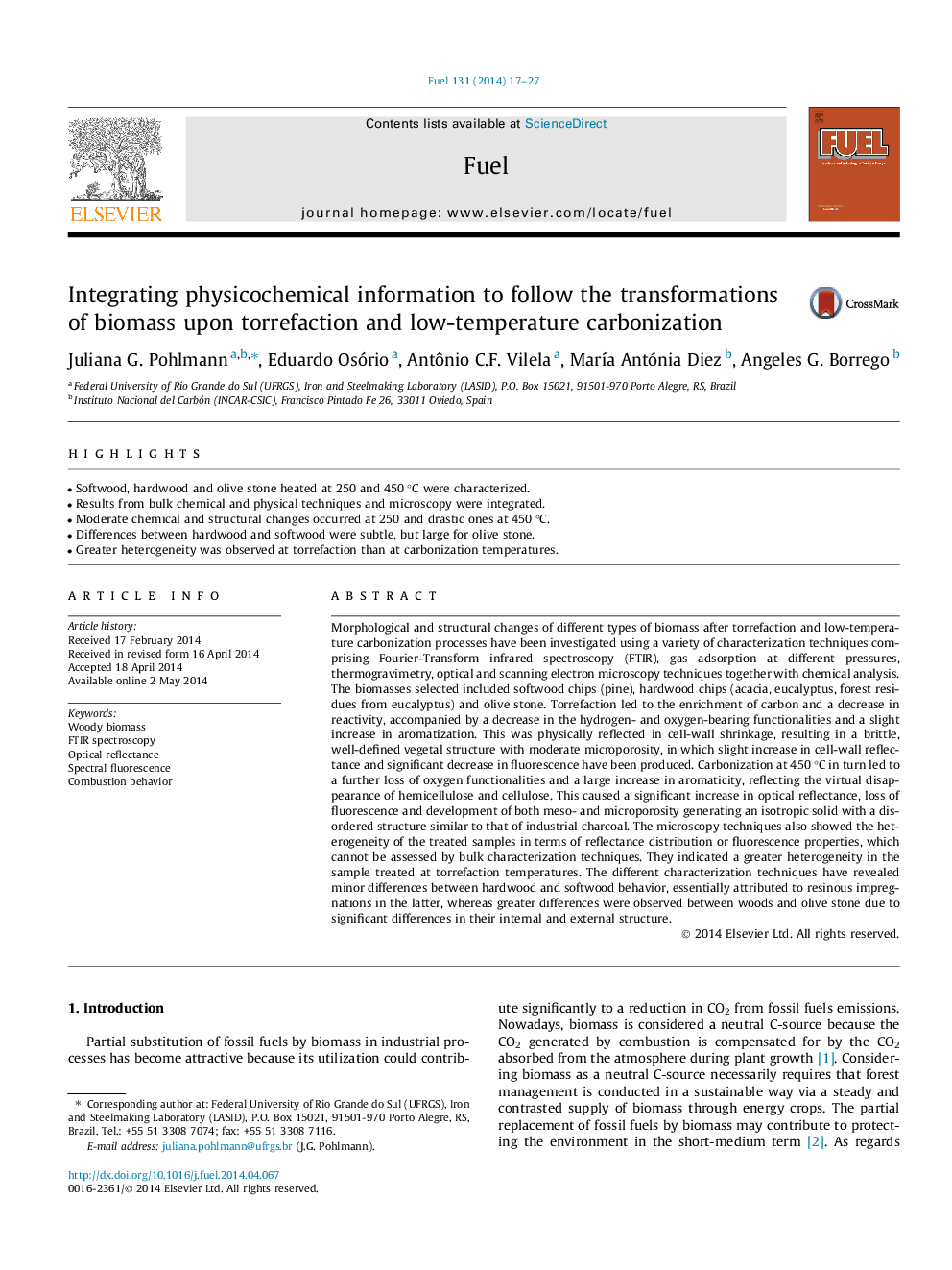| کد مقاله | کد نشریه | سال انتشار | مقاله انگلیسی | نسخه تمام متن |
|---|---|---|---|---|
| 206217 | 461150 | 2014 | 11 صفحه PDF | دانلود رایگان |
• Softwood, hardwood and olive stone heated at 250 and 450 °C were characterized.
• Results from bulk chemical and physical techniques and microscopy were integrated.
• Moderate chemical and structural changes occurred at 250 and drastic ones at 450 °C.
• Differences between hardwood and softwood were subtle, but large for olive stone.
• Greater heterogeneity was observed at torrefaction than at carbonization temperatures.
Morphological and structural changes of different types of biomass after torrefaction and low-temperature carbonization processes have been investigated using a variety of characterization techniques comprising Fourier-Transform infrared spectroscopy (FTIR), gas adsorption at different pressures, thermogravimetry, optical and scanning electron microscopy techniques together with chemical analysis. The biomasses selected included softwood chips (pine), hardwood chips (acacia, eucalyptus, forest residues from eucalyptus) and olive stone. Torrefaction led to the enrichment of carbon and a decrease in reactivity, accompanied by a decrease in the hydrogen- and oxygen-bearing functionalities and a slight increase in aromatization. This was physically reflected in cell-wall shrinkage, resulting in a brittle, well-defined vegetal structure with moderate microporosity, in which slight increase in cell-wall reflectance and significant decrease in fluorescence have been produced. Carbonization at 450 °C in turn led to a further loss of oxygen functionalities and a large increase in aromaticity, reflecting the virtual disappearance of hemicellulose and cellulose. This caused a significant increase in optical reflectance, loss of fluorescence and development of both meso- and microporosity generating an isotropic solid with a disordered structure similar to that of industrial charcoal. The microscopy techniques also showed the heterogeneity of the treated samples in terms of reflectance distribution or fluorescence properties, which cannot be assessed by bulk characterization techniques. They indicated a greater heterogeneity in the sample treated at torrefaction temperatures. The different characterization techniques have revealed minor differences between hardwood and softwood behavior, essentially attributed to resinous impregnations in the latter, whereas greater differences were observed between woods and olive stone due to significant differences in their internal and external structure.
Journal: Fuel - Volume 131, 1 September 2014, Pages 17–27
